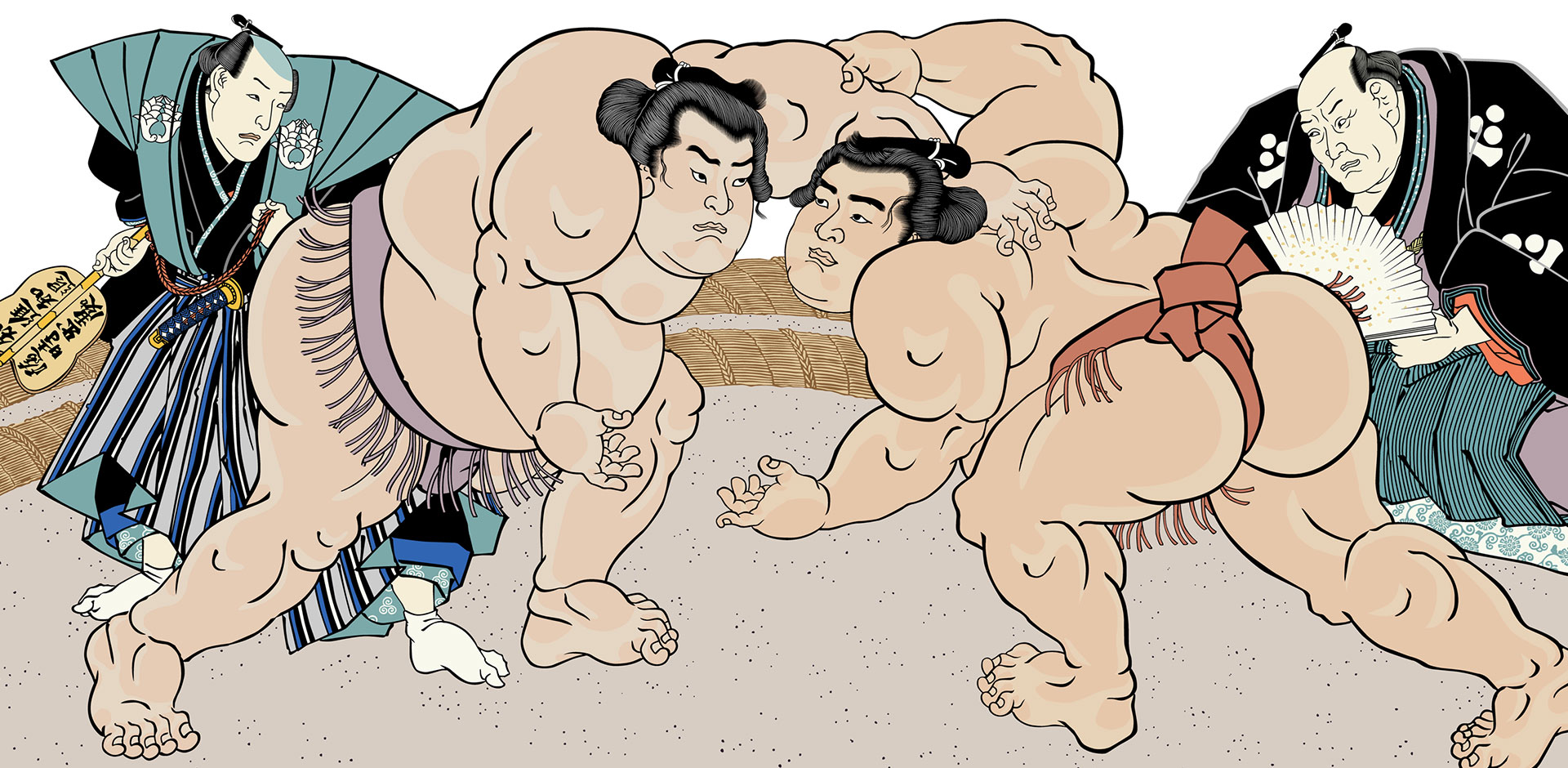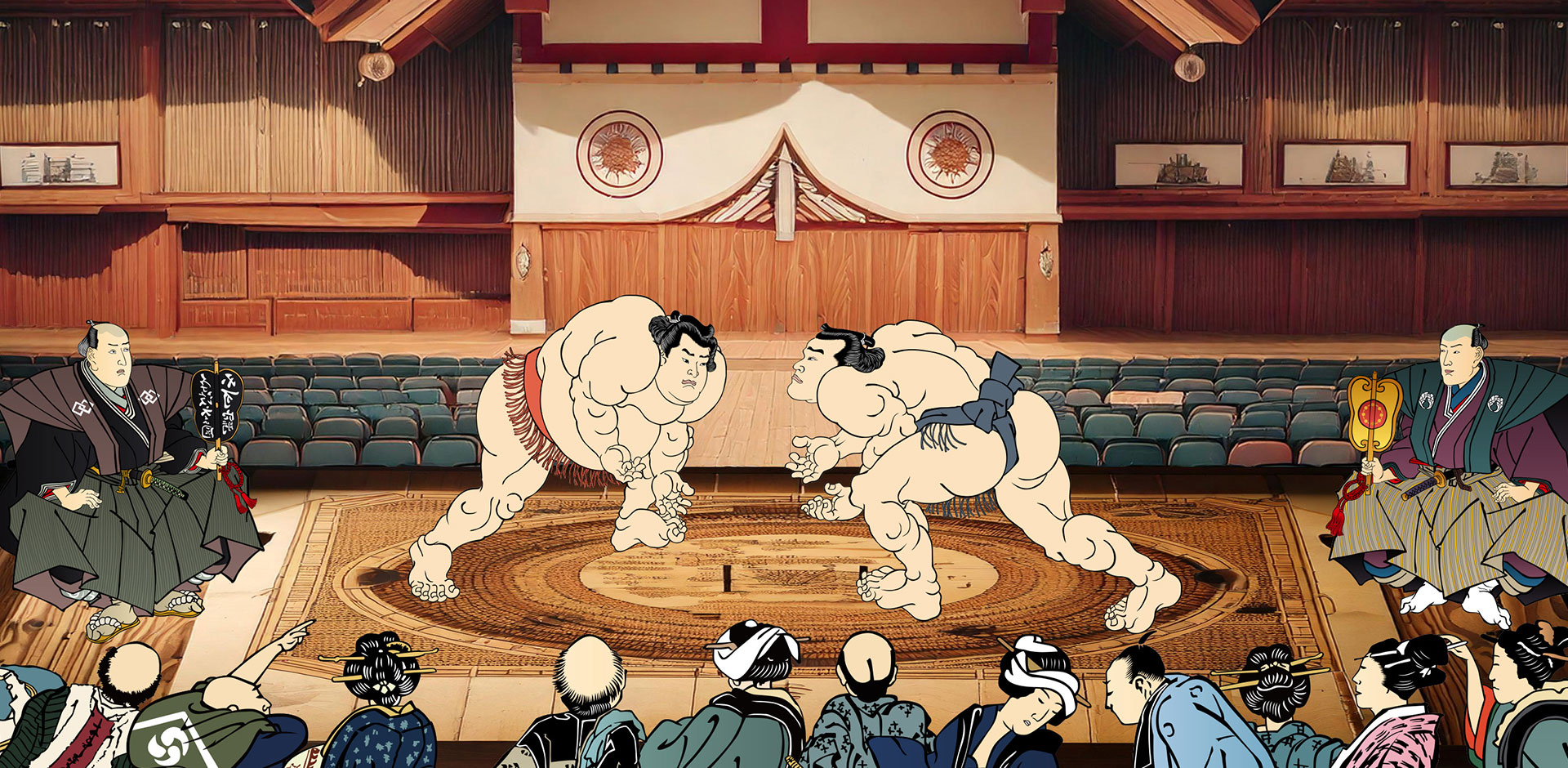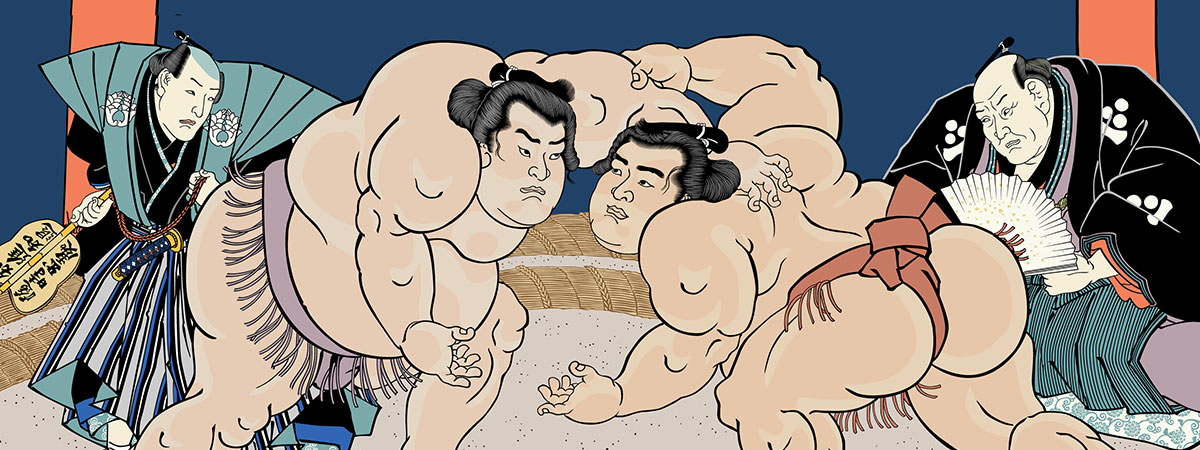Learn about Sumo Culture
Discover Sumo Culture

The Beginning of Sumo
Sumo history passed down from mythology
The roots of sumo can be traced back to the world of mythology. There is a legend that the gods of the earth competed with each other in a contest of strength, which became connected with people's daily lives and eventually developed into a sacred ritual to pray for a bountiful harvest. Sumo was more than just a contest of strength; it was an event that incorporated prayers and gratitude to nature.
Later, sumo changed its form as a court ceremony, training for warriors, and entertainment for the common people, and by the Edo period (1603-1867), the prototype for the current form of sumo was in place. Each of the traditions, such as ranking, ring-entering, and make-up mawashi, has its own meaning, and even today, sumo wrestlers stand in the ring with the weight of these traditions on their shoulders. Sumo is a culture that has lived on in the hearts and minds of the Japanese people, and you can still experience it today as it was long ago.
Basic Rules of Sumo
The simple and profound world of the game
Sumo is a uniquely Japanese martial art that is all about the momentary attack and defense. The match is called “tachiai,” in which rikishi clash fiercely with each other in a breathtaking display of skill. It is a serious contest of body, technique, and spirit.
Victory or defeat is simple. A rikishi loses if he steps out of the ring or if his body touches the ground first. No tools are used, and more than 80 techniques, including oshidashi and nagewaza (throwing techniques), are used to achieve victory. There are also penalties, such as pulling the hair or punching the face. The essence of sumo is to respect courtesy and technique as well as power.
A bout may last only a few seconds, but rikishi practice hard every day to prepare for that moment.
Sumo is not only a contest, but also a ritual. There is a sacred atmosphere and a quiet tension in the ring-entering ceremony, the salt throwing, and the partitioning of the ring. The rules are simple, but the world of sumo is one of power, skill, and tactics. The depth of the game is one of the attractions of sumo, which has attracted many people to the sport since ancient times.

rating system
A sign of strength and dignity
In sumo, there is a ranking system called “banzuke” that indicates the ability and status of rikishi. The highest rank is makuuchi, followed byjuryo, makushita, sandanme, shichi-nidan, and shochi-nokuchi. The makuuchi ranks are yokozuna, ozeki, sekiwake, komusubi, and maegashira, the highest rank in sumo. Yokozuna is the highest rank in the world, and only those who have all the qualities of skill, strength, and dignity are allowed to be promoted to this rank. Yokozuna, on the other hand, is a very strict rank that requires a wrestler to be prepared to leave the ring if he fails to achieve the required results.
The banzuke chart is published at each tournament, and the style and composition of the chart is a cultural reflection of the tradition. The ranking chart is a source of pride for rikishi and a testament to the hard work they have put in.
Schedule
Sumo tournaments, called “honbasho,” are held six times a year. Each tournament lasts for 15 days, and rikishi compete in the same bout every day in an attempt to win the tournament. Since the results are reflected in the ranks, every bout in the ring is a serious contest.
The tournaments begin in Tokyo and tour the country seasonally. In between tournaments, rikishi visit various regions to perform in local tournaments. The tournaments serve to spread sumo culture and deepen ties with the local community.
Honbasho Schedule
January: Hatsu-basho (Tokyo)
March: Spring-basho (Osaka)
May: Summer-basho (Tokyo)
July: Nagoya-basho (Nagoya)
September: Autumn-basho (Tokyo)
November: Kyushu-basho (Fukuoka)


